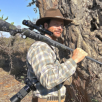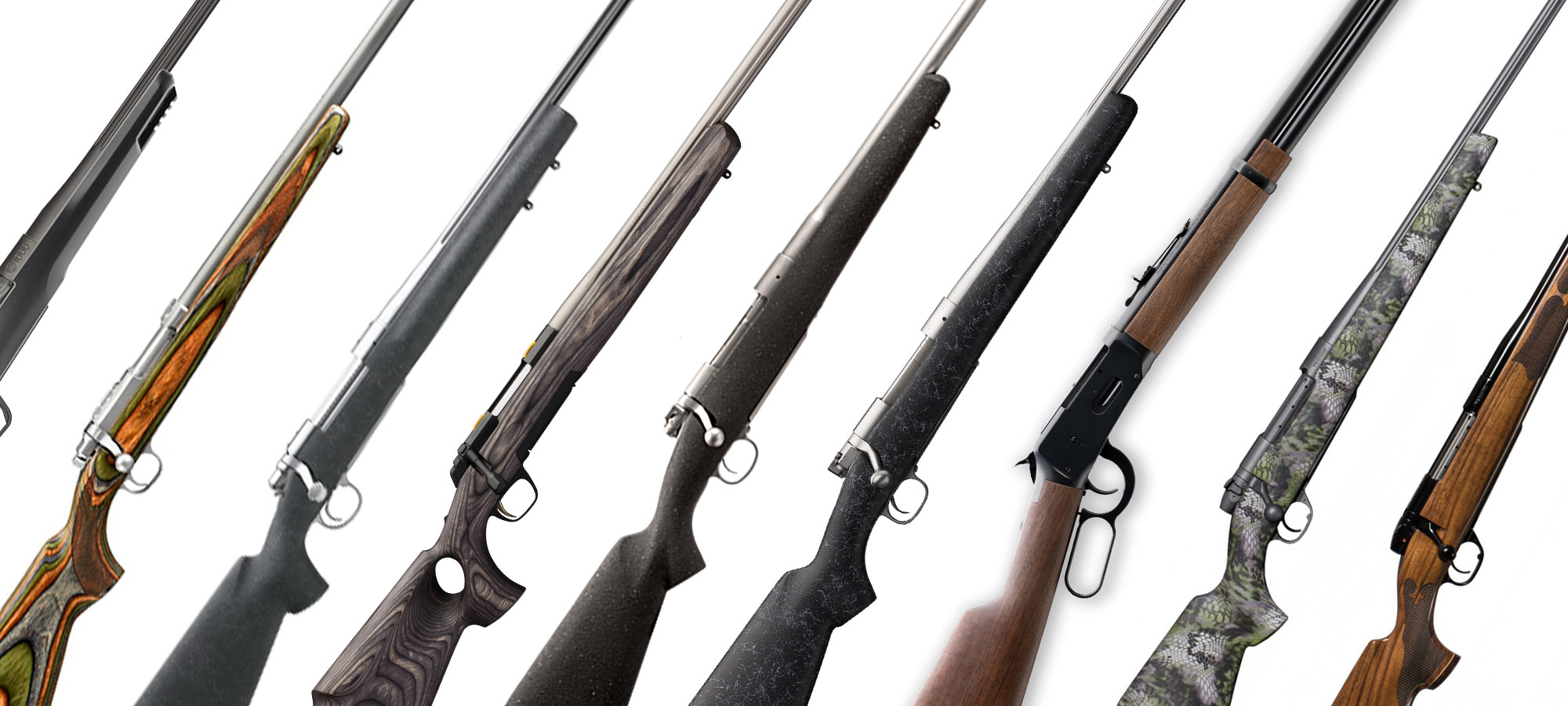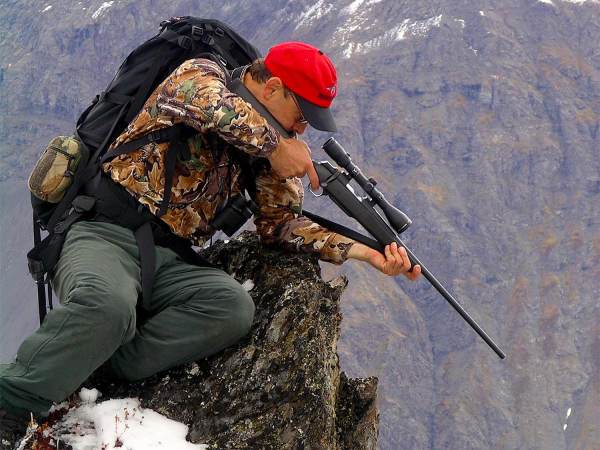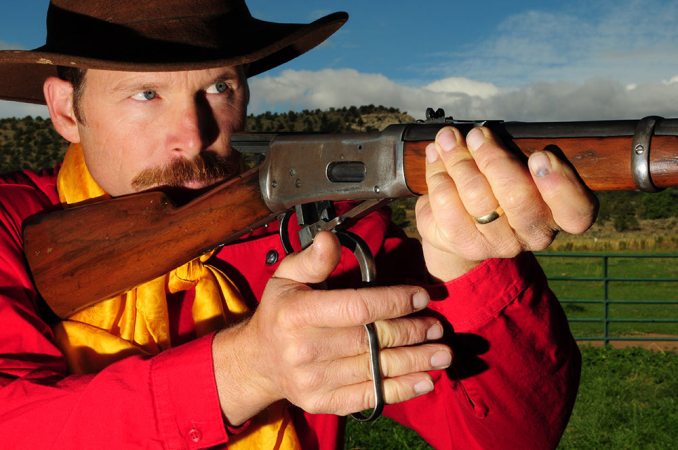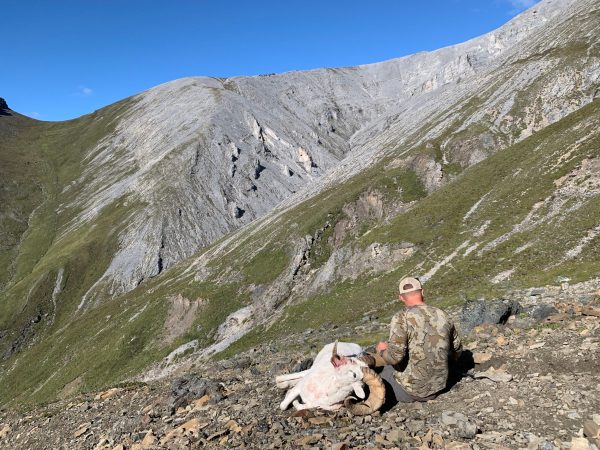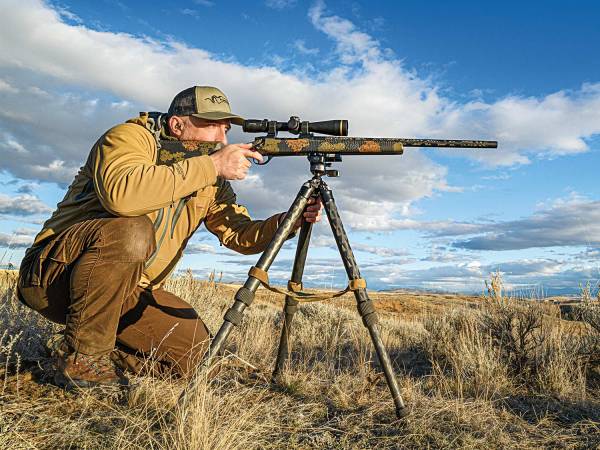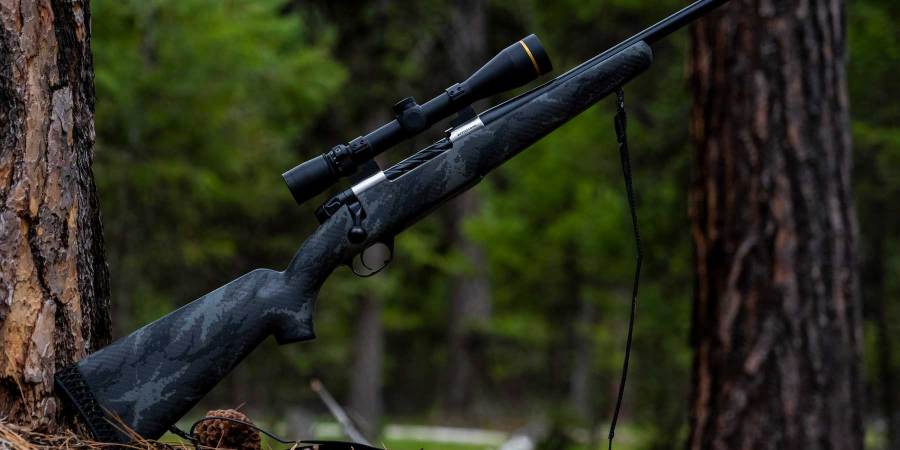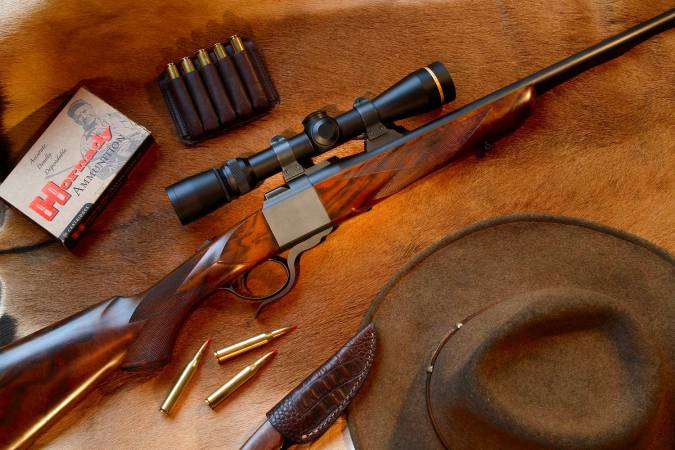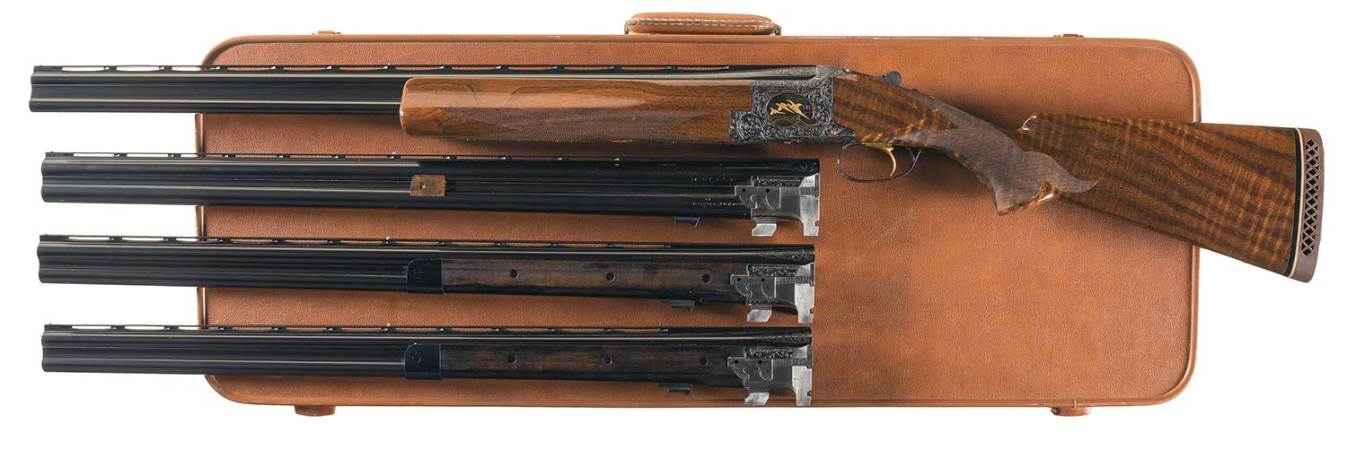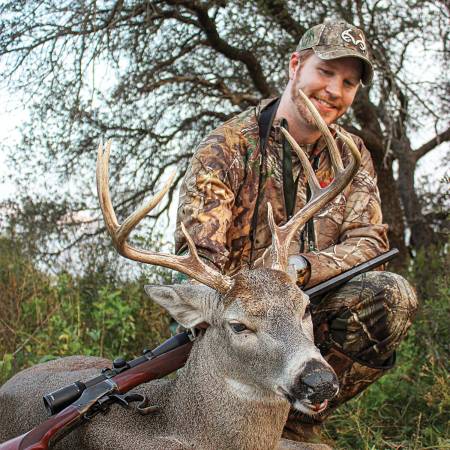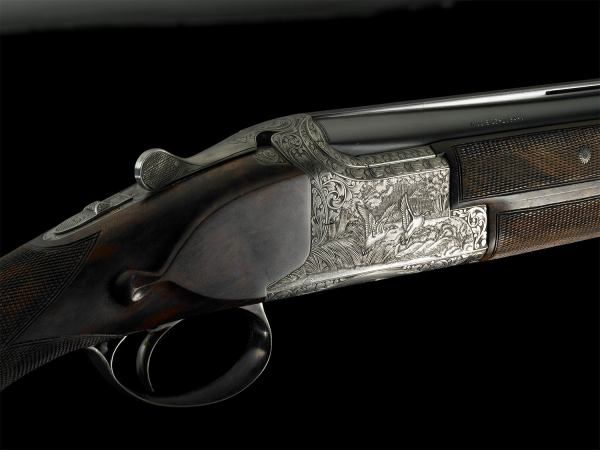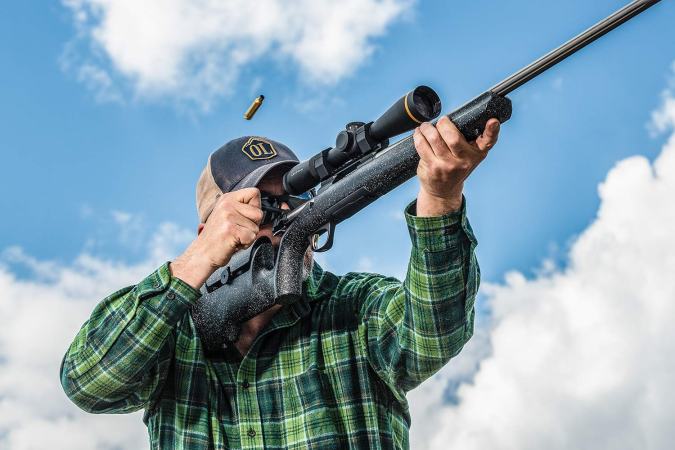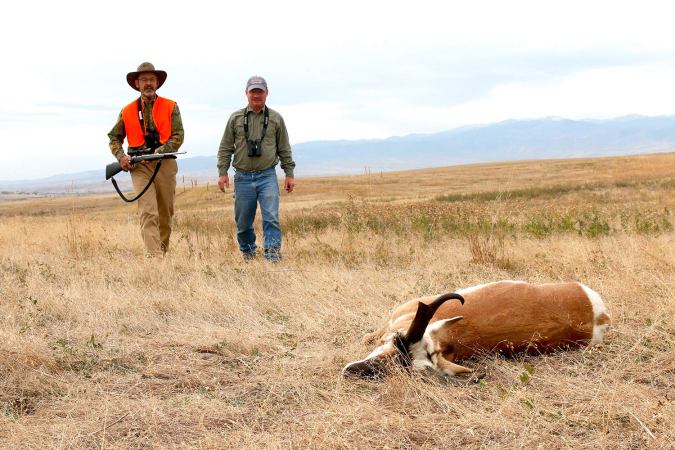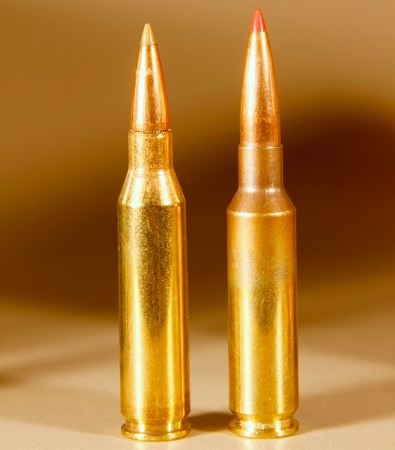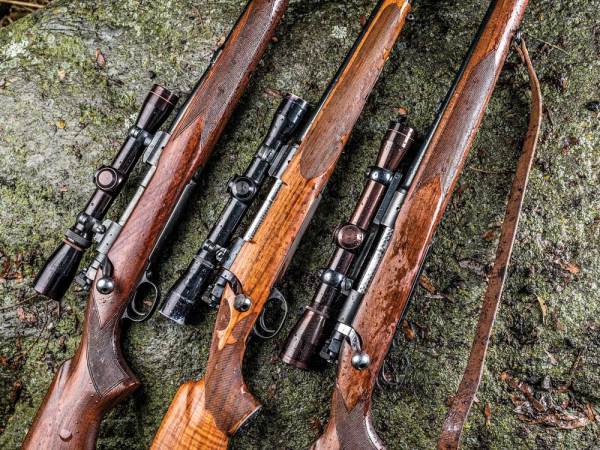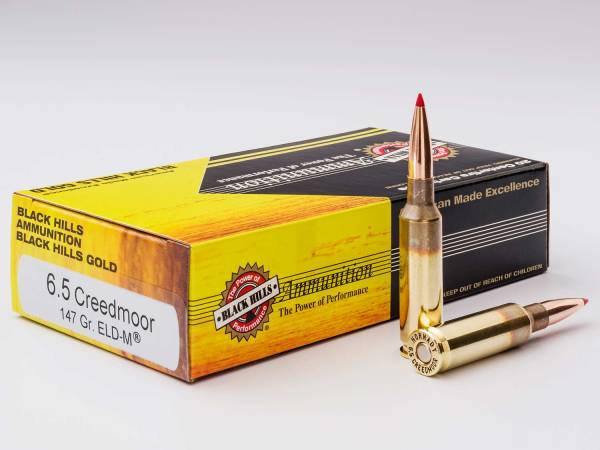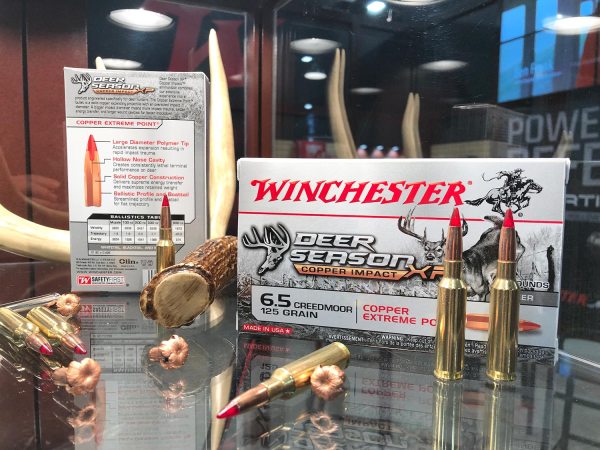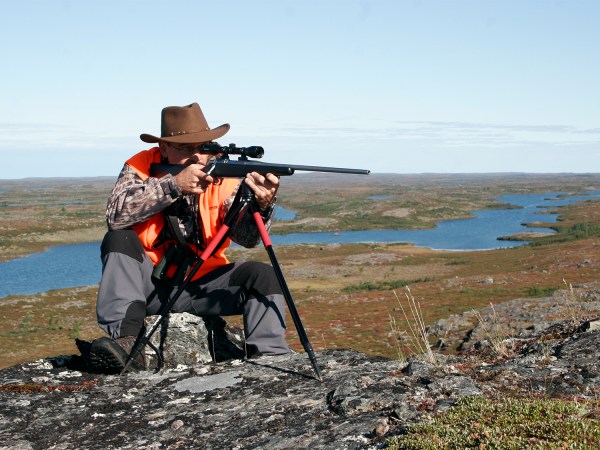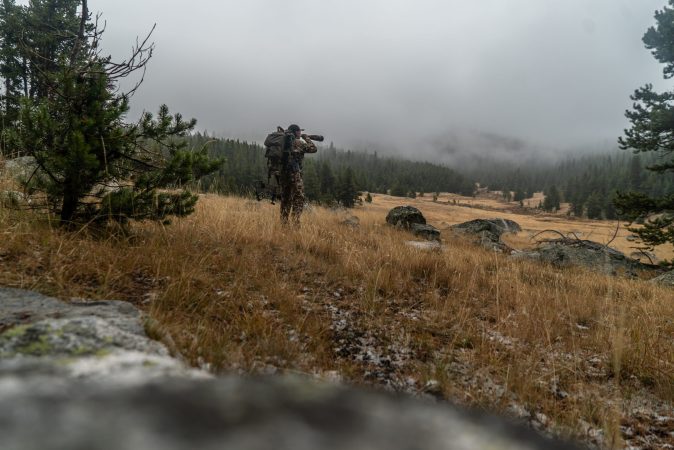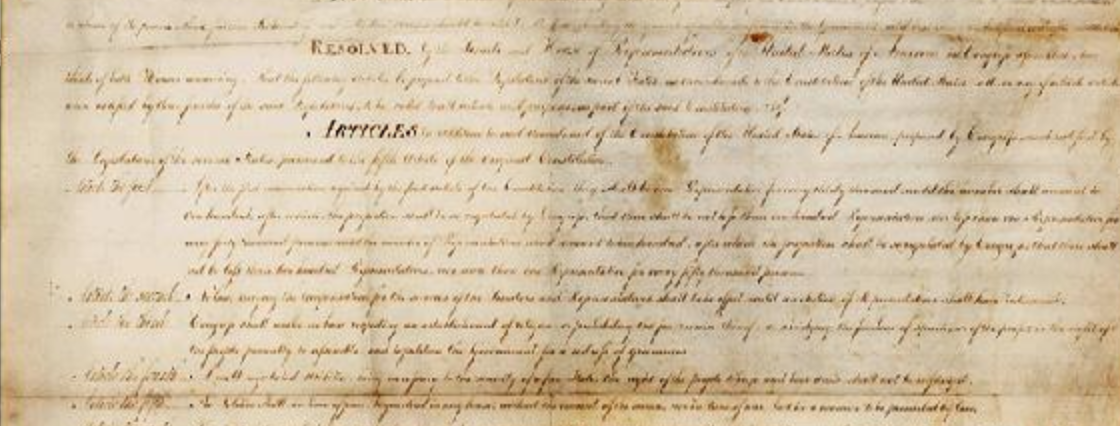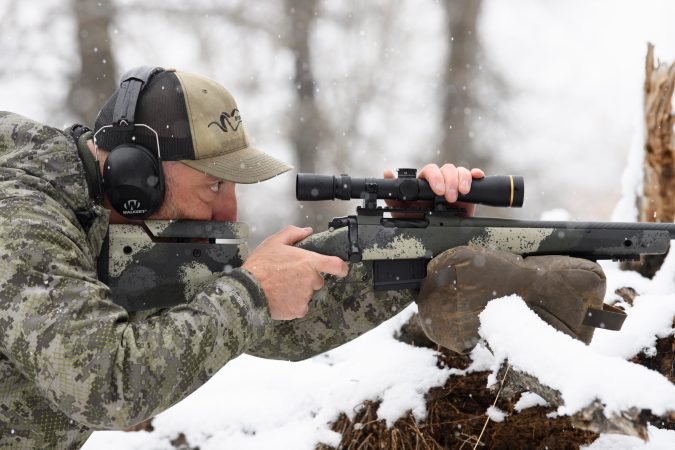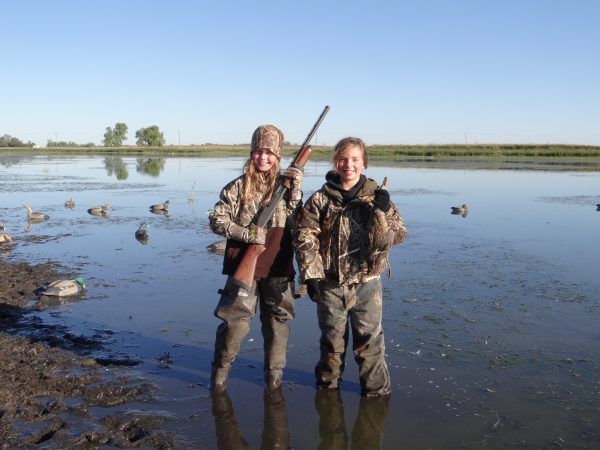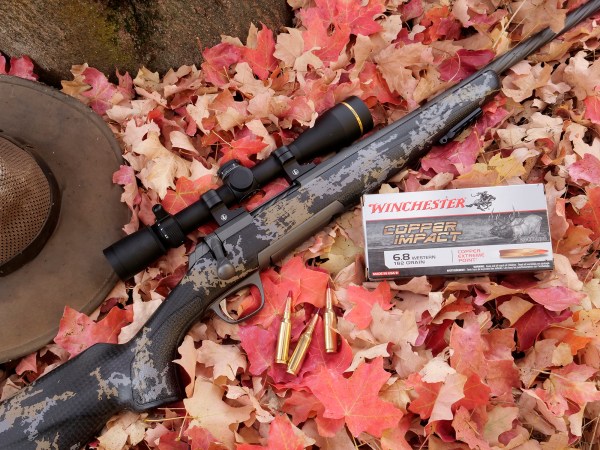We may earn revenue from the products available on this page and participate in affiliate programs. Learn More ›
Dawn of opening day in the West usually comes clear and well announced by a slow gun-metal gray over the eastern horizon. The air is crisp and frosty on the breath, the grass dry and slightly crunchy underfoot. It’s one of the finest days of the year to climb a distant ridge, favorite rifle in hand.
And the rifle is no small part of the equation. Sure, any number of guns will get the job done. But the rifle you choose for an opening day hunt in the West says a lot about who you are as a hunter. And, the memories you take home from the mountains will be etched into that rifle’s history. Choose wisely.
With a new opening day drawing closer, I’m picking my 10 favorite rifles for hunting the mountains, canyons, and deserts of the West. Here they are, including old classic warriors as well as modern marvels of craftsmanship and engineering.
Winchester ‘94
One of the most iconic rifles the U.S. has produced, the Model ’94 still holds the record for the most-sold sporting rifle in American history. Designed by John Browning and built by Winchester beginning in 1894, it was one of the first rifles to successfully make the transition from black to smokeless powder. From the woodlands and thickets of the East coast to the saddle scabbards of western horseback hunters, the ’94 has served faithfully. The most common chambering is 30-30 Winchester, and in the hands of a good lever-gun man, it is and always will be a fast and deadly hunting rifle. For the red-blooded brush-country hunter with a little cowboy running through his veins, this is the go-to rifle.

Were I to choose one rifle that iconizes Western hunting, it would be the Classic Winchester Model 70—a pre-64 model, specifically. It’s the rifle that every young hunter yearned and saved for. It’s the rifle that has never lost, but only gained, value. The Model 70 made its debut in 1936, and was produced in all the great cartridges of the day. It fell on hard times in 1964 due to some poorly advised design changes, but made a comeback in 1992 with the re-introduction of the “Classic” model. It was a worthy save, and Winchester 70’s are still legendary today. Now, my perfect Model 70 would be either a Pre-’64 in .30-06, or an Extreme Weather SS in .30-06 or .300 Win Mag.
Remington 700
A survey I once read demonstrated that the Remington Model 700 was America’s favorite deer rifle. I don’t doubt it. And while I don’t feel quite the enthusiastic fervor that I do for the Mod 70, I still regard the 700 with great affection. Produced in a wide variety of configurations since 1962, the Model 700 action is considered one of the most accurate mass-produced actions in American manufacturing, and accordingly serves as the foundation for a lot of custom-build rifles. My perfect 700? I’d love a Sendero in 25-06: heavy, accurate, and pure death on predators.
Ruger 77
I know hunters from the rain-swept slopes of the Alaskan Peninsula to the sagebrush flats of Utah who swear by their Ruger rifles. “Rugged and reliable” best describes these bolt-actions, and hunters who depend on their rifle for sustenance and survival appreciate those attributes. My 77 of choice would be Ruger’s awesome little 77/22 – a rimfire bolt-action perfect for sniping every varmint from pot-gut gophers to marauding raccoons.

Long viewed as the aristocracy of western big-game rifles, the Mark V is the patriarch of the Weatherby family. Designed during the mid 1950s, production began in 1957. Considered one of the strongest of all bolt-action rifle designs, the Mark V is capable of handling the high pressures generated by many of Weatherby’s cartridges. You’ll see Mark V rifles twice on this list, and with good reason: Weatherby has long been a producer of accurate, finely built, upper-echelon rifles. Were I to pick one for western big-game hunting it would be the Altitude in good old .30-06.

This rifle lineup would not be complete without the inclusion of an ideal lady’s Western hunting rifle. A handful of years ago Weatherby came out with a new rifle: the Vanguard Camilla, named after Roy Weatherby’s wife. The Camilla was designed from the ground up to be a good ergonomic fit for female big-game hunters, and was met with enthusiasm and appreciation. Just recently Weatherby introduced the Camilla in a Mark V model, in both wood and synthetic stocked versions, available in a nice variety of chamberings. My preference would be the 6.5 Creedmoor. For ladies of average build, I don’t think you can do better than a Mark V Weatherby Camilla.

Not all guns pop out of their box and shoot a series of sub-MOA groups the first time you take them to the range. But Browning X-Bolts do. They are known to produce some of the best out-of-the box accuracy known among production rifles. I’m a disciple of Colonel Whelan’s statement: “Only accurate rifles are interesting.” Browning X-Bolts are interesting. Considering the comprehensive selection of rifles tailored to hunting Western big game already on this list, I’ll let my predator-hunting side take over and venture to claim an Eclipse Varmint in .22-250 as the X-Bolt I lust after the most.

One of the nicest handling rifles I’ve owned was a Montana X2. The new and improved version—the X3—weighs slightly less, and is just that little bit better. Designed around the original Model 70 action, Montana’s 1999 is a controlled-round feed action, uses model 70 scope bases, and boasts a good adjustable trigger. The stock is made of hand-laid carbon/fiberglass, and is well designed and balances superbly. One of my favorite things about Montana Rifle Co. is the multitude of chamberings they offer. I’d get my X3 in .280 Ackley Improved: my ideal cartridge for western big-game hunting.
Read Next: 10 Best Deer Guns in Hunting

Gunwerks has developed a stellar reputation for rifles that shoot. And I don’t just mean sub-MOA. Their rifles are engineered in just about every possible way for superior handling and shooting characteristics. I’m going to add a couple rifles of Lamborghini class to this list, and the new ClymR is one of them. Designed as a “Sheep” or “Mountain” rifle, this gun has it all: Lightweight Proof-barreled action in a carbon fiber stock, Trigger Tech trigger, and chamberings in the finest hot-rod calibers of the day. I can tell you exactly what iteration I want, because it’s already on order: ClymR in 6.5 PRC, carbon fiber 24-inch Proof barrel, stock color Forest Tan camo.
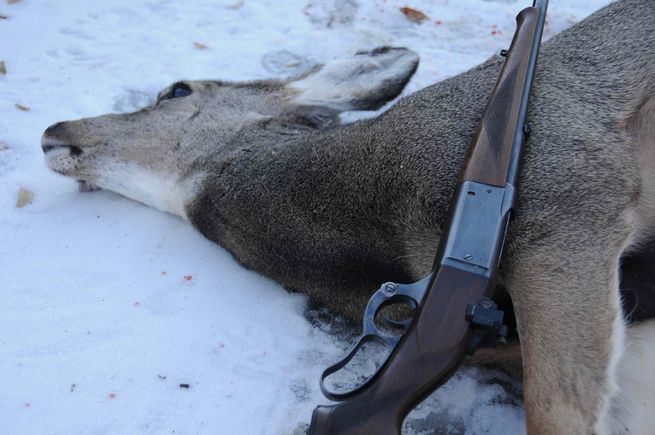
Close upon the heels of Winchester’s ’94 came the Savage ’99, a lever-action design capable of (via a rotary magazine) utilizing spitzer, or pointed, bullets. Spitzer projectiles where new at the time and offered a decided ballistic advantage over the round or flat-nosed bullets of the day. The rifle also featured a hammerless design, improving lock time and eliminating any problems caused by an exposed hammer. The Savage 99 quickly became popular among hunters across the nation, including the West. One of the coolest pieces of history I’ve ever found was a bleached and weathered old broken rifle stock from a Savage 99, deep in a remote canyon in Idaho elk country. I don’t own a 99, but I’d like to, ideally chambered in .250-3000 Savage, the first commercial American round to break the 3000 feet-per-second mark.
More Iconic Lever Action Rifles
Lever-action rifles won the West, and for good reason. They’re fast and reliable. Many of us spent our childhoods shooting toy lever-action rifles all around the woods, plinking empty soda cans as fast as we could. Even Ralphie in “A Christmas Story” liked the repeating rifle.
Here are five classic models, many of which are Winchesters. ––Aram von Benedikt

How to Gain Tags for Your Western Hunt
It’s difficult to imagine any dedicated hunter in North America who doesn’t want to hunt the West. Even for those who have never been there, visions of elk bugling in high aspen meadows and wide-racked mule deer moving stealthily through sagebrush country tug at the soul.
Planning that hunt of a lifetime can be an intimidating experience, however. Pick up a copy of the big-game hunting rules for just about any Western state, and you’ll go from enthusiastic to bewildered before you can say “bonus-point accrual.” Most regulation packets are dense thickets of details and instructions that require an advanced degree to decipher. That’s especially true for nonresident applicants, who typically have to jump through more hoops-and pay a lot more for the privilege-than resident hunters. The process can be so confusing that first-time applicants, overwhelmed by the litany of rules, deadlines and procedures, often abandon their dream of hunting another state, opting to stay home instead.
That’s too bad, because they’re missing out on some of the best hunting in America. From trophy mule deer, moose and bighorn sheep to high-success elk and antelope, Western hunting opportunities are as vast and varied as the landscape.
The very best hunting, in terms of trophy potential and harvest success, is by limited-entry permit. These are hunts for which the number of applicants exceeds the permit quotas, (sometimes by thousands of percent) so the permits are distributed by a lottery, called a “draw,” held months before the season opens.
Even if you’re not drawn for the upcoming fall’s hunt, most states allow you to earn a “bonus point,” a sort of consolation prize that increases your odds of being drawn the next year. For many of the most select permits-bighorn sheep, moose and mountain goats in most states-you need a half-dozen or more bonus points to even have a shot at drawing.
This digest highlights some of the West’s best hunting opportunities, arms you with basic details about how to apply and points you toward overlooked hunts and undersubscribed units. If you get frustrated in the process, remember that no quality hunt is ever easy-including the ones that begin by chasing paper.
Alaska
Dream Hunt: Wrangell Mountains Dall Sheep
The mythical 40-inch threshold-the Holy Grail for Dall sheep hunters- is theoretically possible in about a dozen Alaskan hunting units. In the icy, craggy and vast Wrangell Mountains of southeastern Alaska, a 40-incher is likely. Hone your body and nerves to scale walls of ice and rock, save your money to hire a back-country pilot and a good guide and practice judging horns to distinguish a good specimen from a book ram. And apply this winter for one of 100 sheep permits in the Tok Management Area in units 12, 13C and 20D. Tok received 2,593 applications in 2002, making the draw success rate 3.9 percent.
Need to Know: In many units and for many species, you can simply show up, buy a license and a harvest ticket or locking tag, and go hunting. However, the best, most exclusive big-game opportunities in Alaska are distributed by drawing, the application deadline for which is in December or May, depending on the hunt. If you miss the deadline or you’re not drawn, inquire about registration hunts. Over-the-counter permits are given to nonresidents as well as residents, and hunting is open until a quota is filled. It can be a great way to enjoy a quality hunt on fairly short notice.
Contact: Alaska Department of Fish and Game (907-267-2137; www.adfg.state.ak.us) 2005 Application Deadline: Dec. 6, 2004, for all fall 2005 sheep and goat hunts, some moose hunts and some spring 2005 bear hunts; May 31 for some fall 2005 hunts, including some draw hunts for moose and caribou and most Kodiak and Unimak Island bear, elk, bison and musk ox opportunities.
To Request Application Materials: Go to www.admin.adfg.state.ak.us/license or call 907-267-2137 in Anchorage. Tentative 2005 Hunting License Fees: $25 for residents, $85 for nonresidents. That’s for the prerequisite license; nonresident tag fees range from $325 for caribou, $400 for moose and $425 for Dall sheep to $1,100 for musk ox. A big-game tag may be used for another species of equal or lower monetary value.
Preference/Bonus Points: No
Guides: Licensed guides are required for nonresident brown bear, grizzly bear, Dall sheep and mountain goat hunters. Get a list of guides online at www.dced.state.ak.us/occ/GuiUseReg.cfm or by calling 907-465-2543.
Arizona
Dream Hunt: Coconino County trophies
This northern Arizona county, about the size of Costa Rica, is the second-largest county in the nation, and its wildlife has no peers, as pioneer conservationist Aldo Leopold noted back in the 1920s. Coconino County consistently ranks as one of the top areas for trophy mule deer (with three of the top 20 racks of all time), elk (four record non-typical racks over 400 inches) and pronghorn antelope (including the No. 1 Boone and Crockett head). Most of these trophies come from the Kaibab Plateau, the headlands cut by the Colorado River’s Grand Canyon.
Apply for late mule deer in Unit 12A (200 permits were issued in 2004), then build preference points. You’ll need about seven to have a decent chance of getting a permit.
Need to Know: Expect more nonresident opportunities this fall, as a result of a lawsuit that challenged the way Arizona distributes nonresident tags. But more generous quotas come with strings, possibly requiring out-of-state hunters to participate in habitat improvement work or giving preferential odds to those hunters who have been applying consecutively for years. Other options include higher application fees, higher permit fees and even the requirement that you buy an Arizona hunting license before you can apply for big-game permits. Stay tuned.
Contact: Arizona Game and Fish Department (602-942-3000; www.azgfd.com) 2005 Application Deadline: June 8 for all fall permit hunts.
To Request Application Materials: Go to www.arizona-hunt.com/apps or call toll-free 866-462-0433.
Tentative 2005 Hunting License Fees: A general hunting license costs $25.50 for residents, $113.50 for nonresidents. A nonresident deer permit is $125.50; elk, $371; antelope, $304.50; and bighorn sheep, $920.
Preference/Bonus Points: Arizona draws use bonus points, which you can buy without participating in the drawing. Recent hunter- education course graduates receive an extra bonus point for free.
Guides: No official organization; check with AZGFD (www.azgfd.com) for registered guides in your hunt area.
California
Dream Hunt: Tule Elk in Owens Valley
This subspecies of elk sports a basket of points atop stout antlers, like a European red deer on steroids. Brought back from the brink of extinction after more than a century of overhunting by gold miners and irrigators, tule elk are enjoying a renaissance in eastern California’s Owens Valley (hunts are for residents only). New hunts are cropping up in Fresno, Kings and Monterey counties, too. You can expect a nearly guaranteed hunt with either bow or rifle, but the chances of drawing a permit are less than 1 percent.
Apply for the new La Panza, East Park Reservoir or West Tinemeha tule zone for unhunted bulls and a good shot at a Booner.
Need to Know: Lots of changes afoot this year, including more liberal blacktail quotas to reduce herds in units with declining habitat and a slew of new youth-only opportunities. The permit-only X zones are your best bet for mature bucks, or hunt late September for A-Zone blacktails in the Mendocino National Forest. New archery tule elk areas in Owens Valley have great success odds if you can beat the1 percent chance to draw.
Contact: California Department of Fish and Game (916-445-0411; www.dfg.ca.gov) 2005 Application Deadline: June 2
To Request Application Materials: www.dfg.ca.gov/licensing/index.html Tentative 2005 Hunting License Fees: A basic hunting license costs residents $32.80, nonresidents $113.95. Nonresident deer tags cost $191.65, and sheep permits are $500. Residents pay $20.75 for deer tags, $281.50 for sheep permits and $298.75 for elk permits, which are unavailable to nonresidents.
Preference/Bonus Points: Preference points are awarded to unsuccessful applicants for big-game tags, but applicants must first buy a relatively expensive hunting license to apply, so nonresident demand is generally low. Two preference points gets you most limited-entry deer permits, since California started the system only in 2002. Guides: www.dfg.ca.gov/licensing/pdffiles /licenseguideslist.pdf
Colorado
Dream Hunt: Plateau elk of the Uncompahgre
In 2003, it took eight nonresident preference points (seven for resident applicants) to draw a first-season bull permit in Unit 61, but the investment pays dividends in trophy bulls. One of the West’s classic back-country hunts, this high mesa is punctuated by plunging canyons and timbered ramparts, so you’ll have to work for your wall-hanger. Until the snow drives them off the plateau, some 4,500 elk are available, and the unit is also managed for trophy mule deer. In 2003, there were 770 bull permits available for all four seasons, with harvest success highest in the first rifle season.
Need to Know: With a statewide herd of some 270,000 elk and around 25 percent hunter success, Colorado is the best state in the West for general-tag hunters. It should be even better this year, especially on the Western Slope around Meeker and Craig. Game management units 3, 301, 441, 25, 26 and 5 are expected to feature liberal antlerless elk hunting in 2005. Still, permit hunts produce better bulls. Unit 61 on the Uncompahgre Plateau is managed for quality bulls and muley bucks, but expect wilderness conditions. Also look to units 66 and 67 in southwestern Colorado for trophy bulls.
Contact: Colorado Division of Wildlife (303-297-1192; www.wildlife.state.co.us) 2005 Application Deadline: April 6 for all fall big-game permits.
To Request Application Materials: Go to https://wildlife.state.co.us/total_licensing// or call 800-244-5613.
Tentative 2005 Hunting License Fees: The Division of Wildlife is requesting a fee increase, so expect these 2004 prices to rise: nonresident bull and either-sex elk, $490.25; cow elk, $295.25; deer and antelope, $295.25; moose, sheep and goats, $1,640.25. Residents have a relative bargain, with elk licenses for $30.25, deer and antelope licenses forsuccess odds if you can beat the1 percent chance to draw.
Contact: California Department of Fish and Game (916-445-0411; www.dfg.ca.gov) 2005 Application Deadline: June 2
To Request Application Materials: www.dfg.ca.gov/licensing/index.html Tentative 2005 Hunting License Fees: A basic hunting license costs residents $32.80, nonresidents $113.95. Nonresident deer tags cost $191.65, and sheep permits are $500. Residents pay $20.75 for deer tags, $281.50 for sheep permits and $298.75 for elk permits, which are unavailable to nonresidents.
Preference/Bonus Points: Preference points are awarded to unsuccessful applicants for big-game tags, but applicants must first buy a relatively expensive hunting license to apply, so nonresident demand is generally low. Two preference points gets you most limited-entry deer permits, since California started the system only in 2002. Guides: www.dfg.ca.gov/licensing/pdffiles /licenseguideslist.pdf
Colorado
Dream Hunt: Plateau elk of the Uncompahgre
In 2003, it took eight nonresident preference points (seven for resident applicants) to draw a first-season bull permit in Unit 61, but the investment pays dividends in trophy bulls. One of the West’s classic back-country hunts, this high mesa is punctuated by plunging canyons and timbered ramparts, so you’ll have to work for your wall-hanger. Until the snow drives them off the plateau, some 4,500 elk are available, and the unit is also managed for trophy mule deer. In 2003, there were 770 bull permits available for all four seasons, with harvest success highest in the first rifle season.
Need to Know: With a statewide herd of some 270,000 elk and around 25 percent hunter success, Colorado is the best state in the West for general-tag hunters. It should be even better this year, especially on the Western Slope around Meeker and Craig. Game management units 3, 301, 441, 25, 26 and 5 are expected to feature liberal antlerless elk hunting in 2005. Still, permit hunts produce better bulls. Unit 61 on the Uncompahgre Plateau is managed for quality bulls and muley bucks, but expect wilderness conditions. Also look to units 66 and 67 in southwestern Colorado for trophy bulls.
Contact: Colorado Division of Wildlife (303-297-1192; www.wildlife.state.co.us) 2005 Application Deadline: April 6 for all fall big-game permits.
To Request Application Materials: Go to https://wildlife.state.co.us/total_licensing// or call 800-244-5613. ––Andrew McKean
